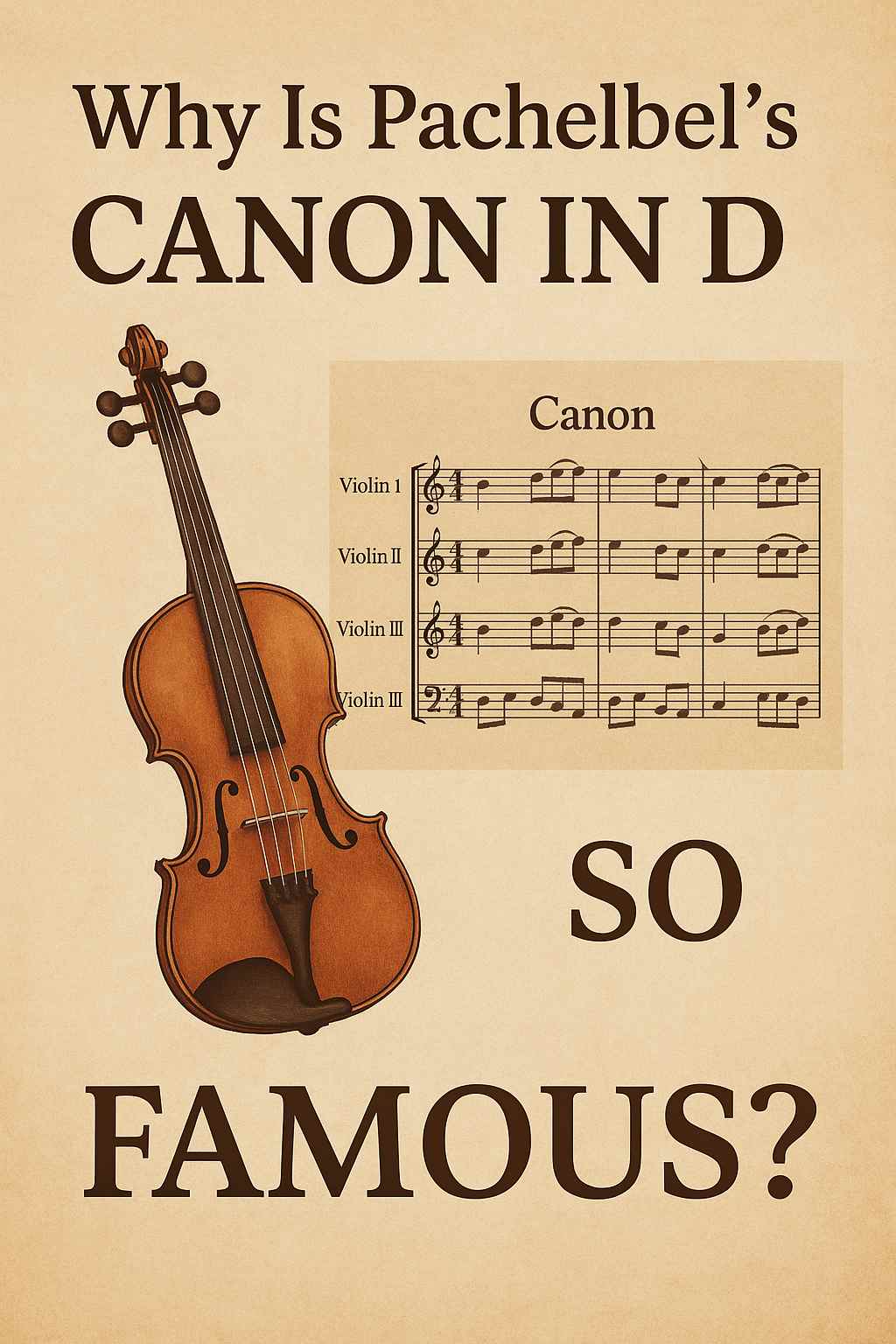Few pieces of classical music enjoy the widespread recognition and adoration of Johann Pachelbel’s Canon in D. Known for its graceful melody and serene flow, the piece has become a timeless favorite at weddings, celebrations, and in popular culture. But what makes this 17th-century composition so enduringly famous? Let’s explore.
1. A Perfectly Crafted Musical Structure
At the heart of Canon in D is its ground bass – a repeating bass line that provides a steady and familiar foundation. Over this, Pachelbel weaves intricate melodic lines through counterpoint and imitation, creating a harmonious interplay of voices. This elegant simplicity draws listeners in and keeps them captivated.
What is Counterpoint?
Counterpoint refers to the technique of combining different melodic lines that sound independent but harmonize beautifully. In Canon in D, each new layer builds on the repeating bass, adding richness and complexity.
2. An Emotional Journey in Every Note
One of the reasons Canon in D resonates so deeply is its ability to evoke universal emotions. Its gentle flow and uplifting melody create feelings of:
- Peace and serenity,
- Nostalgia, and
- Joy.
The choice of D major, a bright and warm key, enhances its emotional appeal, making it ideal for life’s most meaningful moments.
3. A Cultural Icon at Weddings
If you’ve attended a wedding, chances are you’ve heard Canon in D. It’s one of the most popular choices for wedding processionals. The piece’s steady tempo and joyful mood complement the walk down the aisle, symbolizing unity and love. This long-standing tradition has solidified its place in modern culture.
4. Modern Popularity and Media Spotlight
Canon in D didn’t become famous overnight. It gained prominence in the 20th century through recordings and performances. Its widespread use in:
- Movies,
- TV shows, and
- Advertisements
has introduced it to audiences far beyond the concert hall.
Musicians have also reimagined Canon in D in various styles, from rock and pop to jazz and even hip-hop, ensuring its continued relevance.
5. Adaptability Across Contexts
Another key to its success is its versatility. Canon in D fits seamlessly into:
- Celebratory events,
- Contemplative moments, and
- Relaxing listening sessions.
This adaptability makes it a go-to choice for occasions ranging from weddings and anniversaries to personal reflection.
6. Rediscovery of a Hidden Gem
Interestingly, Canon in D was relatively obscure for centuries after its composition. It wasn’t until the 20th century that it was rediscovered by music scholars and performers. The piece’s inclusion in chamber music repertoires and recordings helped catapult it into the spotlight.
Conclusion
Pachelbel’s Canon in D is much more than just a piece of music. It’s a cultural phenomenon that continues to capture hearts worldwide. Whether it’s the elegant structure, emotional depth, or versatile appeal, Canon in D has all the qualities of a timeless masterpiece. Its journey from a 17th-century composition to modern-day fame is a testament to the power of music to unite, inspire, and endure.


